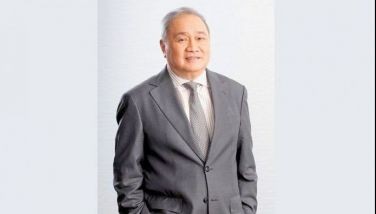BPI Foundation: Pioneering micro-finance credit
August 27, 2001 | 12:00am
More than a decade ago, it was unthinkable for non-governmental organizations to get loans. That changed when the Bank of the Philippine Islands Foundation pioneered a micro-finance concept called the financing assistance line or FAL. Through FAL, BPI Foundation extends a credit line to non-governmental organizations for re-lending to end-borrowers. One of the first FAL beneficiaries was TSPI Development Corp. Starting out in 1989 with a credit line of P500,000, TSPI now has a credit line with BPI Foundation of P4 million. Because of its excellent track record, TSPI has also been given a credit line and term loan totaling more than P20 million by the foundation’s parent company, BPI.
Founded in 1981, TSPI is considered one of the lead organizations in micro-finance in the country today. Based on its latest audited financial statements, TSPI has total outstanding loans of P144.8 million with close to 22,000 active clients. Ninety two percent of TSPI borrowers come from the micro-enterprise sector with an average loan of P3,000 per individual. TSPI’s loan repayment rate is 97.2%.
One borrower is dressmaker, Aniceta Villaviray, who first took out a P5,000 loan from TSPI’s Kabuhayan Program. Although she could earn as much as P1,000 a week during her busiest months, Villaviray had to wait for her customers to pay her before she could move on to the next project.
With the additional capital, she bought additional fabrics, threads, zippers and buttons so she could sew in bulk. With more garments to sell, business has also increased. Villaviray has enough capital to accept the sewing job for the uniforms of 12 teachers for which she will be paid P7,000.
A mother of five and the grandmother to six, Villaviray is thinking of getting a bigger loan from TSPI to buy more stocks of fabric from which customers can choose from. She also hopes to buy a high-speed machine for edging.
Another TSPI borrower is Alicia Sampang of San Jose del Monte, Bulacan. Sampang took out a P50,000 loan to expand her grocery and to go into rice retailing. The next loan of P150,000 built up hardware and construction supplies. Succeeding loans financed poultry and piggery businesses as well as the purchase of a delivery van to transport equipment and orders.
Aside from TSPI, FAL has also been used by the Visayas Cooperative Development Center in Cebu, the Kabalikat para sa Maunlad na Buhay, Inc. in Valenzuela, Metro Manila; the Alalay sa Kaunlaran sa Gitnang Luzon, Inc. in Cabanatuan, Nueva Ecija; the Hagdan sa Pag-uswag Foundation in Cagayan de Oro; and the Gerry Roxas Foundation in Capiz.
In the last 12 years, total releases of FAL amounted to P55 million, which were released to 14 NGOs and cooperatives all over the country and which benefited over 2,000 micro to small enterprises. FAL’s repayment rate is 98%, proving that the poor are good credit risks.
One of the major reasons for FAL’s success is sustainability. Most micro-finance NGOs come from a background of financial operations that rely on donor funding. As donor money have started to dry up, learning to operate viably has become no longer an option but a matter of survival.
One of the key strategies to attain sustainability is to target a large number of borrowers to reach certain economies of scale. This has been achieved by adapting proven micro-finance technologies such as those used by the Grameen Bank and ASA (both of Bangladesh) which enables a single NGO loan account officer to reach hundreds of borrowers using the group lending and group guarantees. In doing so, the micro-finance institution will also have to consider expanding to other communities.
One of the most interesting characteristics of micro-finance is that most of its clients are women. Estimates have it at about 85% of total borrowers. Many theories have been offered. One school of thought surmises that women have better business acumen and are more aggressive in business than men. Another idea is that women have more opportunity for business, given that the men already have regular jobs.
Founded in 1981, TSPI is considered one of the lead organizations in micro-finance in the country today. Based on its latest audited financial statements, TSPI has total outstanding loans of P144.8 million with close to 22,000 active clients. Ninety two percent of TSPI borrowers come from the micro-enterprise sector with an average loan of P3,000 per individual. TSPI’s loan repayment rate is 97.2%.
With the additional capital, she bought additional fabrics, threads, zippers and buttons so she could sew in bulk. With more garments to sell, business has also increased. Villaviray has enough capital to accept the sewing job for the uniforms of 12 teachers for which she will be paid P7,000.
A mother of five and the grandmother to six, Villaviray is thinking of getting a bigger loan from TSPI to buy more stocks of fabric from which customers can choose from. She also hopes to buy a high-speed machine for edging.
Another TSPI borrower is Alicia Sampang of San Jose del Monte, Bulacan. Sampang took out a P50,000 loan to expand her grocery and to go into rice retailing. The next loan of P150,000 built up hardware and construction supplies. Succeeding loans financed poultry and piggery businesses as well as the purchase of a delivery van to transport equipment and orders.
In the last 12 years, total releases of FAL amounted to P55 million, which were released to 14 NGOs and cooperatives all over the country and which benefited over 2,000 micro to small enterprises. FAL’s repayment rate is 98%, proving that the poor are good credit risks.
One of the major reasons for FAL’s success is sustainability. Most micro-finance NGOs come from a background of financial operations that rely on donor funding. As donor money have started to dry up, learning to operate viably has become no longer an option but a matter of survival.
One of the key strategies to attain sustainability is to target a large number of borrowers to reach certain economies of scale. This has been achieved by adapting proven micro-finance technologies such as those used by the Grameen Bank and ASA (both of Bangladesh) which enables a single NGO loan account officer to reach hundreds of borrowers using the group lending and group guarantees. In doing so, the micro-finance institution will also have to consider expanding to other communities.
One of the most interesting characteristics of micro-finance is that most of its clients are women. Estimates have it at about 85% of total borrowers. Many theories have been offered. One school of thought surmises that women have better business acumen and are more aggressive in business than men. Another idea is that women have more opportunity for business, given that the men already have regular jobs.
BrandSpace Articles
<
>
- Latest
Latest
Latest
January 7, 2025 - 9:00am
January 7, 2025 - 9:00am
January 6, 2025 - 10:45am
January 6, 2025 - 10:45am
January 2, 2025 - 2:00pm
January 2, 2025 - 2:00pm
Recommended






























